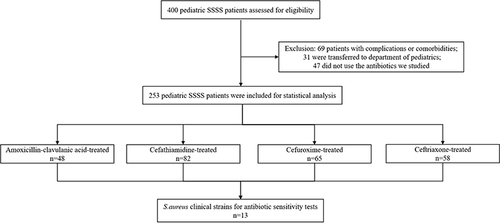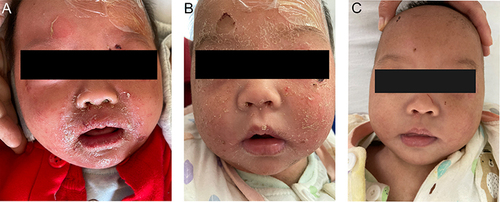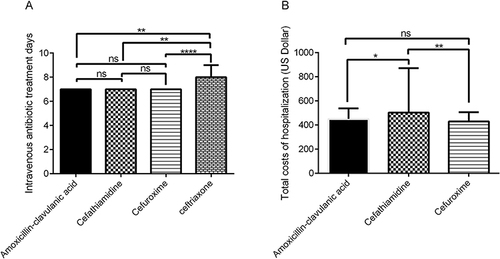Figures & data
Figure 1 Study flowchart of patients and methods.

Figure 2 Skin manifestation evolution of a patient with Staphylococcal Scalded Skin Syndrome (SSSS). (A) A patient with SSSS on admission. Skin erythema, blistering, periocular crusting, radial fissuring, exfoliating rash, and positive Nikolsky’s sign were seen on the face. (B) After 3 days of treatment, the erythema subsided, and the blisters dried up and crusted. (C) The same patient after 7 days of treatment, all the erythema resolved, and a few desquamations were left with mild pigmentation and without scarring.

Table 1 Baseline Characteristics of Pediatric Patients with SSSS (n=253)
Table 2 Antibiotic Sensitivity Test Results of S. aureus Isolated from Patients with SSSS (n=13)
Figure 3 Comparison of the days of treatment course and the total costs of hospitalization among different intravenous antibiotic groups. (A) The differences in the number of days of treatment course among different intravenous antibiotic groups. (B) The differences in the total costs of hospitalization among different intravenous antibiotic groups.

Table 3 Univariate Analysis of Variables Affecting the Treatment Course of Different Intravenous Antibiotics in Patients with SSSS
Table 4 Multivariate Analysis of Factors Affecting the Number of Days of Intravenous Antibiotic Application in Patients with SSSS
